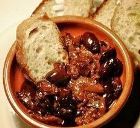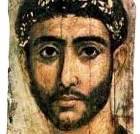Clean and unclean food
There were (and still are) certain foods which Jews were allowed to eat, and others that were forbidden. There were also regulations about the preparation of food.
This is what the Bible means when it talks about clean and unclean foods, and clean and unclean animals – as in the story of Noah’s Ark. Check Genesis 7:2-3 at the bottom of this page.
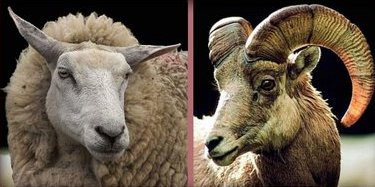
Clean & unclean food. A sheep and a goat, both ‘clean’ meat.
‘Clean’ meat (kosher meat), for example, came from animals who had cloven hooves, and chewed their cud, e.g. goats and sheep.
As a rule, animals that ate grass were permitted; animals that ate flesh (lions, wolves) were not.
Who Killed an Animal?
Permitted animals could only be eaten if they had been ritually killed by a qualified slaughterer. The person who slaughtered the animals had to kill them quickly and humanely, with one stroke. If this was not done and the animal suffered needlessly, the meat was unclean.
From Noah to Mary Magdalene
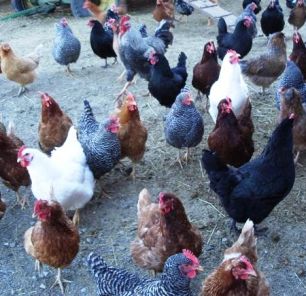
Chicken, turkey and duck were permitted meats
Clean and unclean animals are first mentioned in the Book of Genesis, during the story of Noah. God gives different instructions about how many clean animals to save, and how many unclean ones can be taken. The traditional image of Noah taking two of all kinds of animals into the Ark is not, in fact, accurate.
- Jews were not allowed to eat the blood of an animal, e.g. in sausages. In the ancient world people believed the blood of an animal contained its soul, its life- force. Jews saw this life-force as belonging to God; it was therefore unfit that they should eat it.
- Fish were allowed, if they had fins and scales. Mary Magdalene probably came from the town of Magdala, which was a center of the dried fish industry.
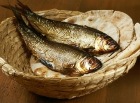
- Shellfish, and the scavenging creatures of the sea, such as lobsters and prawns, were unclean.
- Chicken, turkey and duck were permitted. Mary and Joseph probably kept chickens in Nazareth.
- Birds of prey with talons, such as eagles, were not permitted.
Food Preparation
The rules about clean and unclean food also gave exact instructions about the preparation of food. They seem to have developed from an effort to build an Israelite identity that was separate from the polytheistic cultures around them.
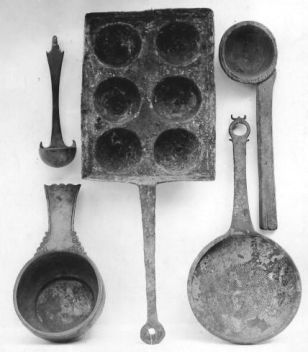
Ancient cooking utensils
Handmade Software, Inc. Image Alchemy v1.14
In the ancient Near East, a baby goat cooked in its mother’s milk was considered a great delicacy. This was strictly forbidden to the Jewish tribes, and developed into kosher rules of preparation:
- meat and milk products could not be cooked in the same utensils or eaten during the same meal
- strict kosher kitchens had two sets of utensils, plates and cutlery, one for meat and one for milk
- foods which came from neither of these food groups, for example fruit and vegetables, could be eaten with either meat or milk.
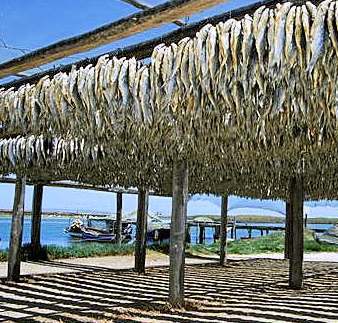
Dried fish on racks
The practice of dividing food into ‘clean’ and ‘unclean’ gave the Jewish people a strong sense of identity.
It was also common sense. In a hot climate, items like shellfish and oysters would quickly go bad during transport into the inland areas occupied by the Jewish tribes. Fish from the Lake of Galilee, on the other hand, could be dried and safely stored – see the photograph at right.
These practical rules, along with high standards of personal cleanliness stipulated by the purity laws, meant that Jewish people had better health and a higher survival rate, especially for their children.
Food in ancient Israel describes the interesting and varied diet of the ancient Jewish people. Why not try it for a week – you would certainly be healthier if you did!
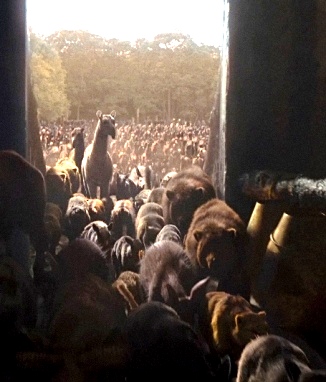
Animals enter the Ark two by two,
a scene from the movie ‘Noah’
Genesis 7:2-3
2 Take with you seven pairs of all clean animals, the male and his mate; and a pair of the animals that are not clean, the male and his mate;
3 and seven pairs of the birds of the air also, male and female, to keep their kind alive upon the face of all the earth.
Read about the fascinating women of the Old and New Testaments
Save
Search Box
![]()
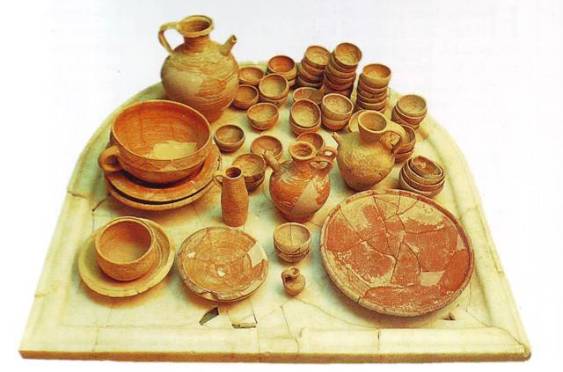
Ancient set of pottery excavated in Israel
Ancient set of pottery excavated in Israel
Bible Study Resource for Women in the Bible: Kosher food: ritual clean and unclean foods
Bible food links
Solomon’s provision for one day was 30 measures of fine flour and 60 measures of meal, 10 fat oxen, 20 pasture-fed cattle, 100 sheep
Jesus and his apostles ate bread and wine at the Last Supper; these were food staples
Date palms were a speciality in the Jericho district and provided wealth for both King Herod and Cleopatra
© Copyright 2006
Elizabeth Fletcher

